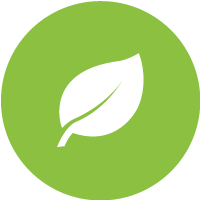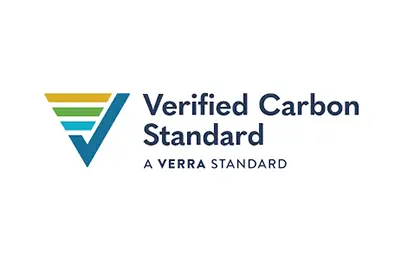The Dominican Republic’s booming tourism industry consumes a hefty amount of energy, with fossil fuels accounting for most of the supply. Set in a less developed part of the country, the Larimar Wind Farm utilizes the breeze that blows in from the sea to generate clean, grid electricity. By creating local employment and improving education, job skills, health, and safety, the project fights the inequalities that all too often affect rural communities.
Where & Why
Known for its beaches and resorts, the Dominican Republic is a global tourism hotspot. Its surging popularity has made it the fastest-growing tourism destination. Over the past five years, visitation to the Dominican Republic grew by 14%. In 2023, the Caribbean island nation received nearly as many tourists as residents (a 10:11 ratio).
While tourism is a key economic activity, visitation and the resulting benefits are not evenly distributed across the country. Nearly 70% of visitors flock to the resort town of Punta Cana. As is typically the case, poverty is greater in rural areas like Barahona province, where 36% of households are poor compared to 22% for the entire country. The Dominican Republic has the highest rate of economic inequality in Latin America. The richest 1% of the population earn 30% of the national income, while the poorest 10% earn less than 1%.
Along with these income inequality challenges, the tourism industry also impacts the environment. In fact, the booming tourism industry is one of the top drivers of increased fossil fuel consumption in the Dominican Republic. Many aspects of the tourism experience rely on fossil fuel energy sources, from cooling hotel rooms to driving around the island. As tourism has grown, so has the country’s electricity consumption, increasing 66% over the past two decades.
To mitigate its impact on the planet, the Dominican Republic has set a goal to be net zero by 2050. Most (79%) of the country’s electricity comes from fossil fuels such as natural gas, coal, or oil. Because the Dominican Republic is highly reliant on fuel that is imported from overseas, they pay a premium for their energy supply. Reducing reliance on these polluting, expensive fuels will require substituting them with electricity derived from cleaner sources.
Like many tropical islands, the Dominican Republic is in an opportune climate to produce renewable energy. The strong, consistent breezes that blow in from the sea are ideal for generating wind energy, and there is plenty of sunlight to produce solar power. With the cost of fuel rising worldwide, it is even more imperative for island nations to generate their own power. Due to the small scale, high cost, and low financial sustainability of many island renewable energy projects, they are generally less attractive to developers. Fortunately, their development and maintenance costs can be supplemented through carbon offsets to incentivize developers and help island nations generate their own clean energy.
How & Who
This project supports the operation of a wind farm in the Dominican Republic’s rugged and remote Barahona province. The wind farm gets its name from the rare blue “Larimar” gemstone, found only in the Dominican Republic. Located near the small coastal village of Enriquillo, the Larimar Wind Farm is nestled between the mountains and the Caribbean Sea. Here, the same sea breeze that makes the palm trees sway provides a powerful force that spins the wind turbine blades.
Larimar consists of 29 state-of-the-art Vestas wind turbines. Each turbine, with a formidable capacity ranging from 3.3 to 3.45 megawatts, harnesses the power of the Caribbean trade winds to generate clean and renewable electricity. This energy is sent to the national grid, providing enough power for over 194,000 residents across the country. By shifting from fossil fuels to renewables, this project prevents the annual release of more than 265,000 metric tons of CO2e.
The ongoing operation of the wind farm supports the local economy and provides new jobs in the area, offering residents a chance to work close to home. Employees of the wind farm are educated on the implications of climate change and how they can reduce their personal impact. The project developer also helps community members increase their professional qualifications through training in hospitality & tourism services, basic English, secretarial work, and computer skills. This project also reduces the island’s dependence on costly imported fuels by bringing energy production in-country.
In addition to these employment benefits, the project developer supports initiatives and infrastructure improvements that improve health and safety in the rural Enriquillo community. This includes providing hospitals with new medical equipment, sponsoring dental care, repairing school pipelines to provide running water, constructing a modern fire station and sponsoring first aid training for the department, installing lighting to improve safety in public places, and donating supplies to relief agencies. There have also been efforts to increase equity and inclusion, such as delivering school supplies to low-income students, distributing coloring books that celebrate diversity, and introducing children to sign language. Through their Eco-Schools program and support for marine research, the project developer promotes the conservation of natural resources.

Environmental Benefits
- Mitigates climate change by reducing reliance on fossil fuels
Raises environmental awareness and supports the conservation of natural resources

Community Benefits
- Provides skills development and job opportunities
- Supports economic development in a rural part of the country
- Improves safety, health, and education
- Reduces dependence on imported fuel
Project Type

Energy
Location
Annual CO2 Reduction
265,391 MT CO2e (expected annual average for crediting period)
SDGs Supported
Verification Standard
Project Developer
EGE Haina
Project Documents



Offset your Travel Footprint
Calculate and offset the carbon footprint of your flight in seconds via our online carbon calculator. Already know your carbon footprint? Click the option to “offset now.”








